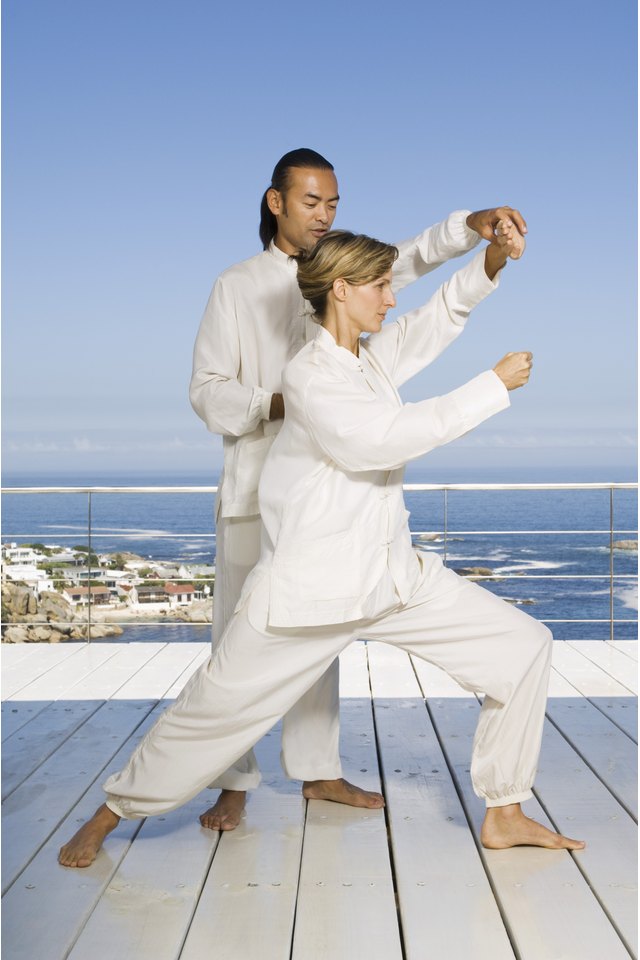The Five Levels of Tai Chi

Unlike a number of other martial arts, tai chi doesn't have a defined grade system: there are no exams to take or colored belts to gain. Nevertheless, there is an established route of progression from student to tai chi master, which equates to five levels of learning. Advancement through the levels is slow and ultimately requires complete dedication to tai chi in order to achieve the highest level.
Form and Posture
The beginner's level of tai chi teaches the basic tools for working with chi energy. The majority of western practitioners stay at this level, and many teachers don't go beyond this level either. Beginner's level is where you learn the correct stances that cultivate the flow of chi around the body. Chen Xaiowang, a tai chi master of the Chen form, estimates that it takes around six months to master the art's relaxed, rounded stances. He also points out that control of the form -- that is the steps -- and posture develops the student's awareness of the internal movement of chi.
Chi Awareness
The second level focuses on chi awareness. Once the student can perform the steps and adopt the correct postures as if they were second nature, the student can shift focus to feeling the chi. The student's posture may still require work, and master Chen suggests the student concentrate on smooth, flowing movements because there is a tendency to perform the movements too quickly. The overall aim of this level is achieving an awareness of the balance of internal and external chi. The physical movements involve external chi, which should harmonize with the flow of internal chi. The student needs to experience this to fully comprehend it. This second level may require five years of study with an acknowledged tai chi master.
Studying With a Master
At this third level, the student needs to devote a significant amount of time to tai chi practice with his teacher. This may be daily or at least several times per week. Master Chen says that this level focuses on using the mind to control chi and synthesize your body movements with your mind. It is at this point that the student will learn the more martial-art type aspects of tai chi. This involves learning fighting techniques using weapons combined with the external and internal manipulation of chi in combat stances. This takes at least two years, and some may practice at this level for a decade.
Disciple and Lineage Holder
A tai chi master is handed down secret and specialist knowledge by his master. A student at the fourth level is considered a disciple worthy of receiving this knowledge by the master of a particular tai chi tradition. This master is the lineage holder. He selects the disciple worthy of attaining level five, which is the position of the next lineage holder.
Perfect Balance
At level five, the tai chi master is in a state of perfect balance and has complete mastery of body and mind.
References
- Energy Arts: Five Levels of Tai Chi Masters
- The Five Levels of Taijiquan; Chen Xiaowang
- Nick Gudge: Five Levels of Skill in Tai Chi Training; Howard Choy and Ahtee Chia
Writer Bio
Based in London, Eleanor McKenzie has been writing lifestyle-related books and articles since 1998. Her articles have appeared in the "Palm Beach Times" and she is the author of numerous books published by Hamlyn U.K., including "Healing Reiki" and "Pilates System." She holds a Master of Arts in informational studies from London University.
